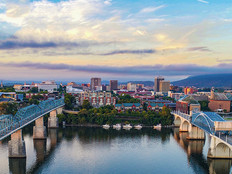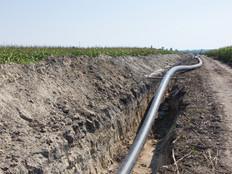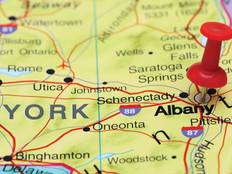How Municipal Broadband Models Generate Results
In July, the battle for state-level net neutrality in the California legislature drew attention to state and local broadband governance. California legislators like state senator Scott Wiener pressed for a law that would prohibit internet service providers from throttling broadband speeds, among other things, for various customers, according to Wired.
It’s interesting to note, however, that broadband access throughout the state and the country are the result of different models implemented by governing authorities. Those models sometimes differ from municipality to municipality, and they result in various avenues to internet access — either wholly funded by taxpayers and implemented by public agencies or provided entirely by private business in a competitive market, noted Blair Levin, nonresident senior fellow for the Brookings Metropolitan Policy Program, in a recent assessment.
One such model, pioneered by the communities of the North Carolina Next Generation Network (NCNGN), leaves the task of providing broadband access to the private sector. Another in Lincoln, Neb., employs conduit to support private sector carriers in the rapid and efficient rollout of next-generation services. And places outside of urban areas may receive broadband access from rural electric co-ops, which take full responsibility for the network and service. The United States now has 750 communities where broadband services are offered by a local municipality or electric cooperative, as stated in the Institute for Local Self-Reliance.
Cities Weigh Different Methods of Providing Internet to Citizens
The NCNGN consortium awarded a contract for building a broadband network in a case watched closely by other cities and states. Similar urban areas without a public broadband contract receive service from rival cable companies and telecoms offering broadband access – look at Salt Lake City, Utah, for example. Like the NCNGN communities, some cities contract with private companies to run city-based broadband initiatives, as Westminster, Md., did with Ting Internet, while others sell their public networks to private companies. Recently, Burlington, Vt., sold its broadband network to a private company.
In Lincoln, Verizon sought to access the city's fiber conduit system in 2016 for use on 30 light poles to provide more consistent and reliable cellphone service downtown. Verizon is the first private cellphone company to use the city’s fiber system in this way, as reported in the Lincoln Journal-Star. City-owned fiber networks certainly have their champions among municipal officials. Chattanooga, Tenn., was among the first cities to offer a publicly owned broadband backbone in support of a citywide cable and fiber-to-the-home (FTTH) network.
The Arkansas Valley Electric Cooperative is working to bring high-speed broadband service to its customers in rural Arkansas. And the North Arkansas Electric Cooperative is running a broadband pilot called Next. (CDW is a platinum associate member of the National Rural Electric Cooperative Association.)
Taxpayer Funding and Open Access for All Subscribers
In June, the Federal Communications Commission officially repealed net neutrality protections, which stipulated nationwide that internet service providers could not limit access to certain sites or slow down internet access for different classes of customers, as the New York Times reported. This move focused more scrutiny on municipal broadband models such as those described above.
Taxpayer-funded internet access could provide open access to all subscribers, essentially enforcing net neutrality, if municipalities chose that route, Government Technology reported. Should more cities establish municipal broadband service, private companies could potentially lose business. One estimate reveals Comcast could lose up to $23 million a year when faced with local competition in Fort Collins, Colo., as it completes a municipal broadband network, according to Fortune.
It also remains to be seen how the buildout of federal FirstNet public safety communications network will affect broadband in specific cities or rural areas. Every U.S. state and territory has opted into the network being established by AT&T to give first responders a dedicated fast lane of broadband access, GCN reported, and much of the deliberation over FirstNet deployment is occurring at state-level offices. Discussions may soon occur at the municipal level as well. The availability of FirstNet could improve broadband capabilities for everyone as first responders move to dedicated networks.
The Institute for Local Self-Reliance tracks more than 750 U.S. communities on an interactive Community Network Map, identifying 55 municipal networks serving 108 communities with publicly owned FTTH citywide networks. Over the next few years, we may see if the various models tracked by the map produce different results on net neutrality, FirstNet and internet access as local authorities step up to provide leadership on broadband governance.
This article is part of StateTech's CITizen blog series. Please join the discussion on Twitter by using the #StateLocalIT hashtag.
Some statements in this blog have been updated thanks to input from Masha Zager, Editor-in-Chief, Broadband Communities.










